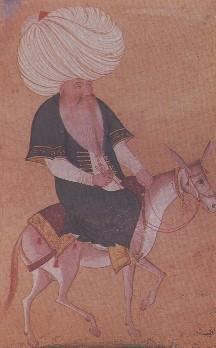|
|

|
|
Eskisehir and Sivrihisar
|
At Gavurkalesi, 60 km from Ankara on the Haymana Highway near Derekoy, the remains of an open-air Hittite temple, a tomb and two reliefs of Hittite gods can be seen. The most important Phrygian sites in Anatolia are to be found in the provinces of Ankara, Eskisehir and Afyon. Yassihoyuk (Gordion), 105 km southwest of Ankara on the Eskisehir highway, was the capital of Phrygia and the place where Alexander the Great cut the Gordion Knot to gain the key to Asia. The tumulus of King Midas, who turned whatever he touched to gold, can he visited here. Nearby, the remains of the ancient city Gordion, still under excavation, and a small museum are worth a quick tour. Off the same Ankara-Eskisehir road is Ballihisar (Pessinus), an important Phrygian religious cult center. The most important remains are those of a temple to Cybele, the mother goddess whose worship was at the heart of the Phrygian culture. The small open air museum has some interesting sculptures and tombstones. |

|
|---|
|
At Midas City two enormous facades cut into a rocky promontory once held cult statues for the worship of Cybele in their niches. Throughout the area, rock tombs - cave- like openings pierce the sand colored stone. An underground passage leads from the site to the valley below. Aslantas and Aslankaya were both centers of cult worsoip in Phrygian times. The former, 34 km north of Afyon,has two monumental lion reliefs the latter, 52 km from Afyon,comprises a temple and a lion relief.Other Phrygian monuments can be explored at Doganlikale, Kumbet and Deveboynu. Eskisehir was founded in the first millennium B C. on the banks of the Porsuk River by the Phrygians. Significant architectural monuments include the 13tn century Alaeddin Mosque and the 16th century Kursunlu Complex. All four of the city museums are worth visiting: the Archaeological Museum has Phrygian objects and sculptures from the area; the Meersohaum Pipe Museum displays pipes and other objects made of meerschaum;the Yesil Efendi Ottoman House Museum a fine example of 19th century domestic architecture,houses a collection of local ethnographical items and fireplaces for curing meerschaum;and the Ataturk Culture Museum has a photographic exhibition of Ataturk's life, a number of personal effects and a display of items made of meerschaum. The world's best meerschaum, a soft white stone, comes from mines in the area surrounding Eskisehir. Pipes and other objects can be purchased in the city souvenir shops. A spring-fed lake, Sakaryabasi, surrounded by beautiful parkland, draws many visitors who want to enjoy the fresh air and eat in one of the fresh-fish restaurants. |

|
Sivrihisar's charn derives from its many typical Ottoman houses which imbue the town with a faded elegance. The 13th century Ulu Mosque, formerly a caravanserai, and the Alemsah Mausoleum are very interesting and worth a visit. Connoisseurs of carpets and kilims will know that kilims from Sivrihisar are particularly prized. Near Sivrihisar in Nasrettin Hoca Village (Hortu), the Nasrettin Hoca Museum has ethnographical displays as well as amusing stories and pictures about the famous humorist. On the hillside above Seyyit Battal Gazi stands the imposing 13th century mosque and tomb complex built in memory of the "warrior of Islam", Seyyit Battal. Yunus Emre Village (Sarikoy) is the burial place of Yunus Emre, the great 13th century poet. His poetry lives today, its message of love and humanity as relevant as ever Commemorative celebrations are held in the town every May. In addition to his grave, visitors can see a small museum dedicated to his life and works. |
|---|

|

|


This site prepared by Tayfun Kalyoncu on 28.02.1997 and last updated on 01.05.1999.
For any comments and suggestion please send an e-mail using the form at page mailform.html